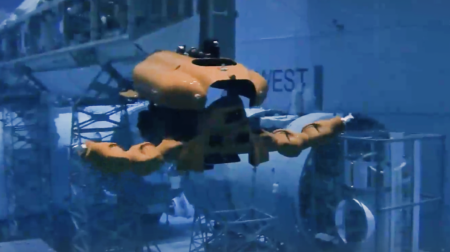An untethered squid-like robot has been created by engineers at the University of California (UC), San Diego, which can carry sensors and cameras for underwater exploration.
The robot carries its own power source and moves through the water similarly to a squid. It takes a volume of water into its body then releases the energy by compressing its body before generating a jet of water to propel itself.
Researchers conducted several experiments to determine the size and shape of the nozzle that would propel the robot. The team said this in turn helped them increase the robot’s efficiency, its ability to manoeuvre and go faster.
Michael T. Tolley, a professor in the department of mechanical and aerospace engineering at UC San Diego, said: “Essentially, we recreated all the key features that squids use for high-speed swimming.
“This is the first untethered robot that can generate jet pulses for rapid locomotion like the squid and can achieve these jet pulses by changing its body shape, which improves swimming efficiency.”
The soft robot is made from acrylic polymers and 3D laser-cut parts. The researchers said using a soft robot in underwater exploration will protect both fish and coral.
Engineers have tested the robot both in a lab testbed and an aquarium tank. In tests, the ‘squidbot’ reached between 18-32cm per second and demonstrated it could steer by adjusting the direction of the nozzle.
Caleb Christianson, who led the study as part of his Ph.D. work in Tolley’s research group, said: “After we were able to optimise the design of the robot so that it would swim in a tank in the lab, it was especially exciting to see that the robot was able to successfully swim in a large aquarium among coral and fish, demonstrating its feasibility for real-world applications.”
The team from the UC San Diego has detailed its work in Bioinspiration and Biomimetics.







